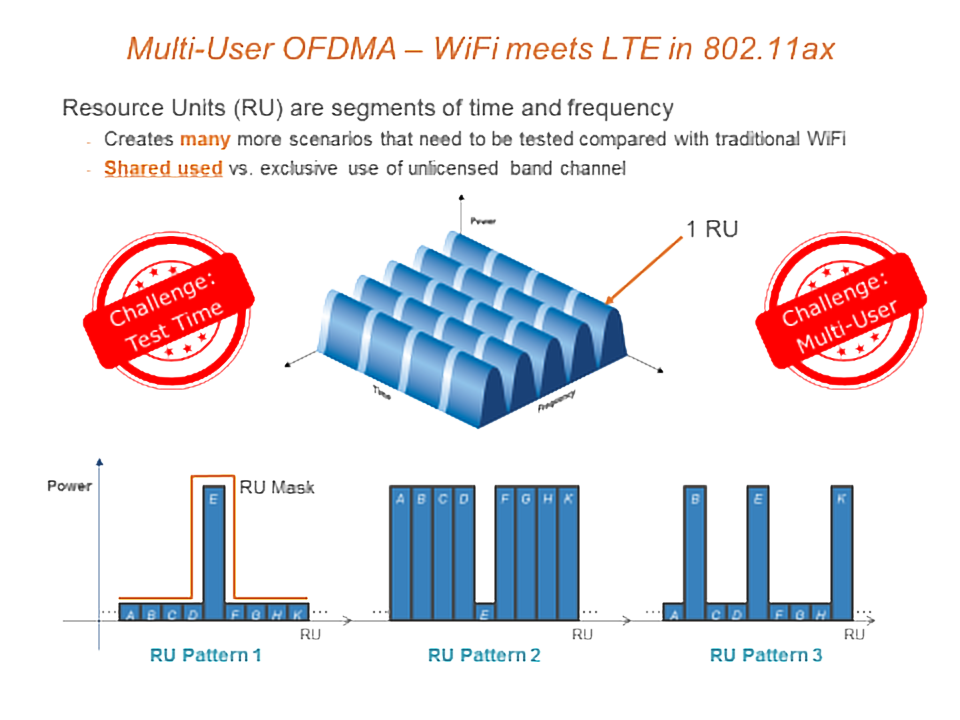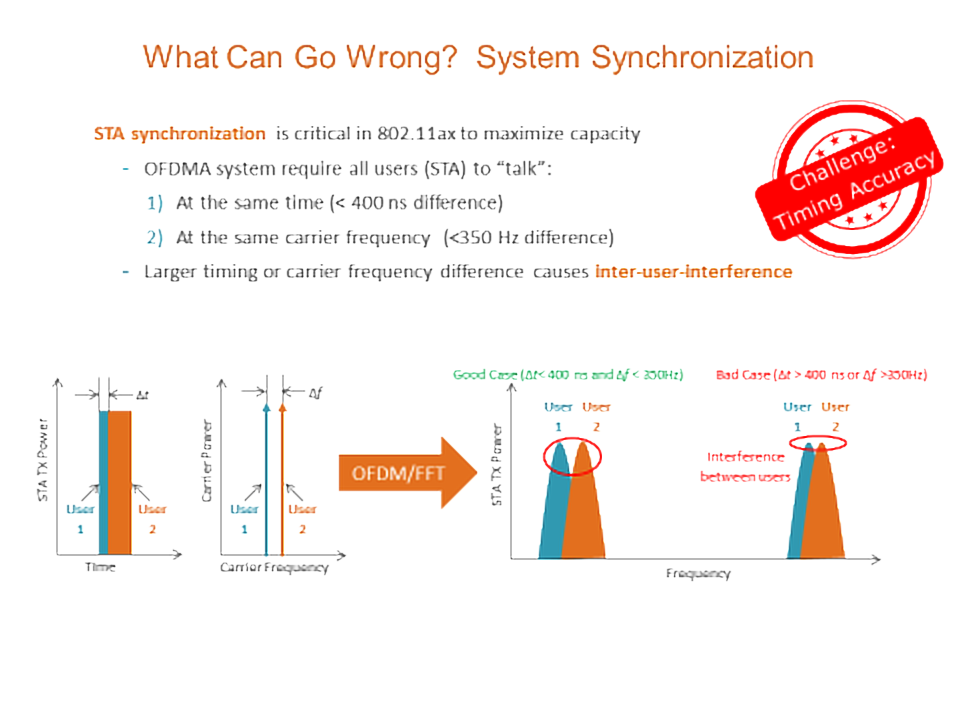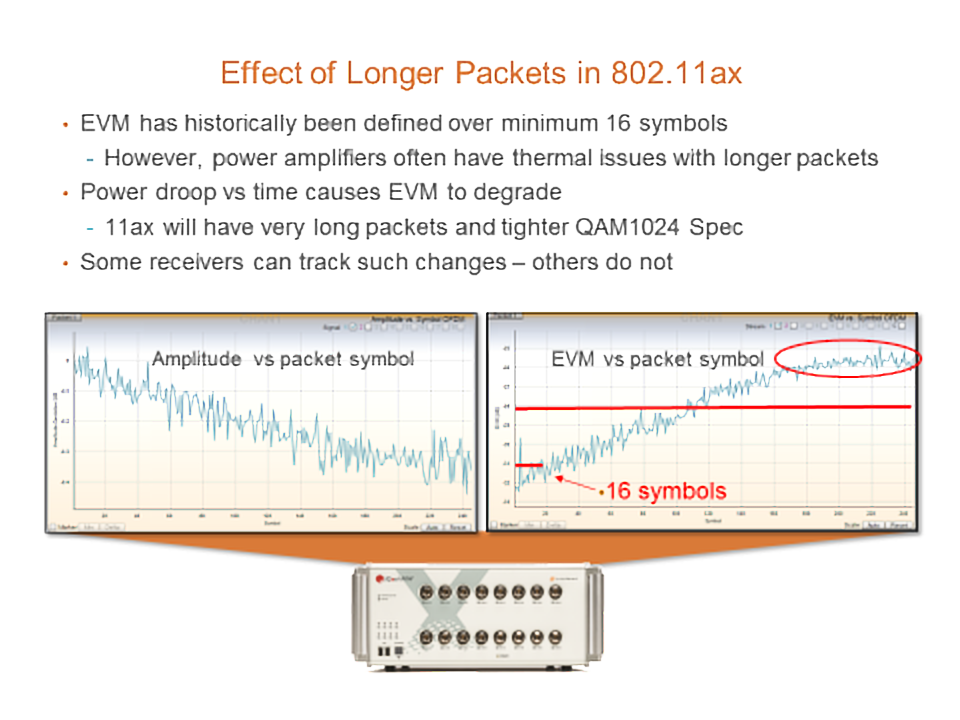It’s a common traveler issue–stuck at the airport or coffee shop, trying to download that large attachment from that urgent email before heading to the next meeting. But the download takes forever and it’s not long before the blame is put on the W-Fi connection speed.
While this scenario repeats itself at airports across the world, the issue isn’t Wi-Fi speed. Each generation of Wi-Fi has brought higher throughput; but these standards haven’t dealt with the real issue vexing the airport user (or those at coffee shops, stadiums, large office buildings, universities, etc.). That issue is too many users fighting for a limited amount of capacity. 802.11ax seeks to solve that problem.
The 802.11ax standard borrows technology from LTE networks to deliver a significant breakthrough in user capacity. While this technology has long been in use in 4G/LTE networks, it is the first time it is being applied to the crowded and chaotic unlicensed bands in which Wi-Fi operates. This presents some unique testing challenges.
First OFDMA-based Wi-Fi Standard
The first notable change in 802.11ax is a switch to Orthogonal Frequency Division Multiple Access (OFDMA) borrowed from 4G/LTE networks. This is a large step beyond Orthogonal Frequency-Division Multiplexing (OFDM), which is used by 802.11ac and previous Wi-Fi generations. The implications of this change include the end to Wi-Fi access point backward compatibility and an increase in 802.11ax access point test intensity than previous generations. Thus, test time is the first of three key testing challenges that Wi-Fi equipment manufacturers must understand as they begin their new product development.
Challenge 1 – Increased Test Time

OFDMA expands the capacity of OFDM by allocating bandwidth to multiple users simultaneously by channeling data sessions into different frequency bands. The combination of the frequency slot and the transmission time is a bandwidth segment called a Resource Unit (RU). Each data flow is allocated one or multiple RUs. This shared use of the spectrum creates many more scenarios that need to be tested compared with traditional Wi-Fi, where testing is just done on a single-user connection basis.
New strategies must be developed to provide comprehensive testing of the increased user scenarios without a significant increase in test time. Today’s Wi-Fi tests start with a device set-up stage that is followed by stimulating that device and capturing a response. The set-up time tends to be the longest part of this process because it requires sending a device control command over USB. This can take tens of milliseconds; if a tester is doing that hundreds of times to account for each RU scenario, the time can add up quickly.
The solution is to adopt sequence-based testing in which a series of events covering all of the frequencies is loaded into the test equipment. All of these events get processed simultaneously in the set-up stage, rather than each event being sent to the device under test (DUT) serially for each specific channel or frequency. This has already been deployed in LTE; so this is likely the test time solution that will be available for 802.11ax.
Challenge 2 – Timing and Power Control Accuracy

Signal power is an important criterion for 802.11ax systems as the shared spectrum between multiple users means those with strong signals from devices close to the access point can crowd out weaker signals from devices located farther away. Transmission (TX) power calibration, as well as receiver (RX) RSSI calibration, are crucial in 80211ax.
Real-time and low latency measurements of power control are critical to best mimic the real-world response. Testing systems must be designed with specialized hardware to support these capabilities as traditional software-controlled behavior from a test program to an instrument cannot provide anywhere near the real-time behavior needed.
Timing is also very important in 802.11ax. Testing this for a station (STA) requires that the tester mimics the timing of the access point (AP). Employing event-based triggering in test equipment makes this type of measurement simpler to deploy.
From a test point of view, historically there has been time-based triggering in which there is a time-zero event and a time-x event. The tester records each and compares the difference. With 802.11ax, a packet is sent at time zero and another packet is sent at time x and the tester must be triggered just on the packet rather than everything in between. In order to do this, a tester needs to be able to speak in packet-based, rather than time-based, language.
The reason timing is so important is that the system has to synchronize between access point and STA devices–otherwise things can go wrong. The access point needs to correlate all data at the same time (< 400 ns difference) and at same carrier frequency (350 Hz difference). If there’s a large time or frequency error, this can cause users to interfere with each other, which can reduce the capacity in the system or desensitize a user.
Challenge 3 – What Was Tried-and-True in Wi-Fi is Different in 802.11ax

In 802.11ax, some of the tried and true testing metrics and processes that have historically worked for Wi-Fi are significantly different for the new standard. Transmitter testing is an example. Testers have been measuring error vector magnitude (EVM) for quite some time now to quantify the performance of a digital transceiver. For previous Wi-Fi generations, this testing is typically done using short packet lengths. In 802.11ax, the packets will get much longer, because the access point has to coordinate more traffic at the same time, which is more efficiently done using long packets.
The challenge with this is that when power amplifiers are turned on for long periods of time to process the longer packets, they heat up and these thermal issues can cause power to drop. If a tester only measures 16 symbols, the PA works well; but with longer packet lengths there can be degradation in EVM measurement performance. This can impact the ability for the STA to receive the signal or it will reduce the range at which the STA can receive the signal.
From AP to Base Station
The key to achieving success in testing an 802.11ax device is to stop thinking of the access point for Wi-Fi as just a traffic cop routing traffic around. It’s really turning into a mini base station that has to coordinate all the traffic from all the stations and get them to talk at the same time, respond at the same time, and be able to increase the network capacity. It’s like running a little cellular network operating in unlicensed spectrum – the line between Wi-Fi and cellular is starting to get blurry.
In 802.11ax, design validation is more crucial than ever because 802.11ax leverages new technology to change the nature of Wi-Fi and the testing it requires to ensure quality products. If product designers don’t play by the new rules of 802.11ax, the customer is going to have a really bad experience with the device.




